steel wire rope fittings manufacturer
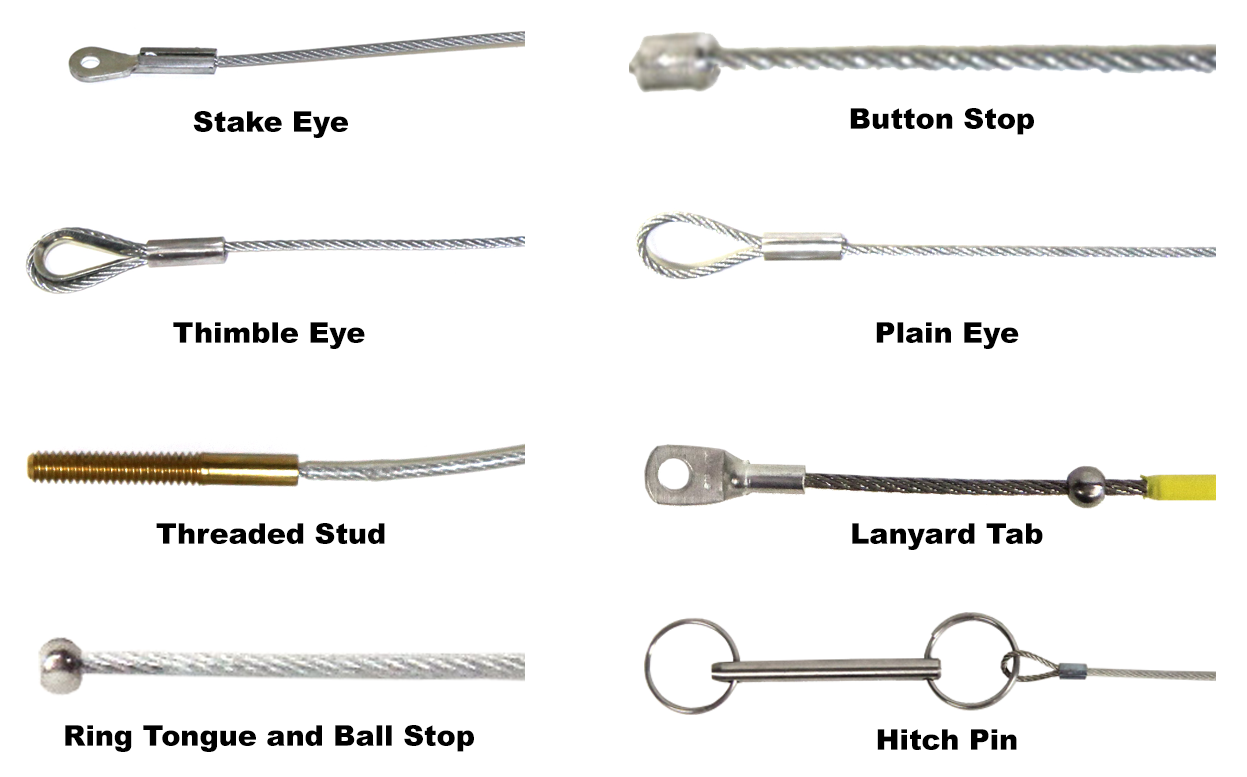
The majority of wire rope fittings are elements of a complete wire rope assembly designed for a specific task such as motion control or mechanical automation. Wire rope fittings are heavily implicated in a number of industrial processes and equipment such as mining equipment, braking, aircraft cables, levelers, hood latch releases, and more.
The versatility of fittings renders them essential to industries such as automotive, agriculture, construction, marine, aerospace, transportation, and virtually all applications where wire rope is used. Specific examples include clamps, clips, sleeves, links, hooks, forks, eyes, studs, and pins.
When used for heavy duty lifting, pulling, or other activities, fittings are often permanently attached or affixed to a given cable for added durability and security though change toolkits are sometimes available allowing for interchangeable fixtures. Wire rope manufacturers often provide a range of wire fitting options as well in order to accommodate the many different uses for the cables.
Fittings function by creating an endpoint to which other apparatus may more easily be affixed or which simply preserves the integrity of a given cable by preventing fraying, a common problem for unfitted stranded wire ropes. As aforementioned, the specifics of a fitting vary greatly as does their construction, shape, and size, all of which should be carefully considered in regards to their intended use.
Swaging, metal stamping, and die cutting are commonly used to create the metal forms needed for wire rope assemblies. Swaging involves compressing and deforming materials to achieve a permanent connection or bonding. While stamping and cutting are used to create additional hardware, swaging is performed when no additional hardware is desired, but instead the fitting requires the rope to be folded back onto itself to create a loop or eye.
Potted or poured sockets use both permanent and affixed elements as the rope end is inserted into a conical cavity that is then filled with molten zinc or an epoxy resin compound.
The materials used to create the fittings themselves vary with application, but often mirror that of the wire rope or cable. Copper, brass, bronze, steel, titanium, stainless steel, and other durable metals are among the most popular.
It is important to consider the integrity of the wire cable itself when selecting and applying a wire fitting as it may alter the strength, length, and dimensions of that particular section of rope.
Fittings known as sleeves and thimbles are often used in complete wire rope assemblies to protect the stranded wire from wear, tear, crimping, bending, pinching, or other damage.
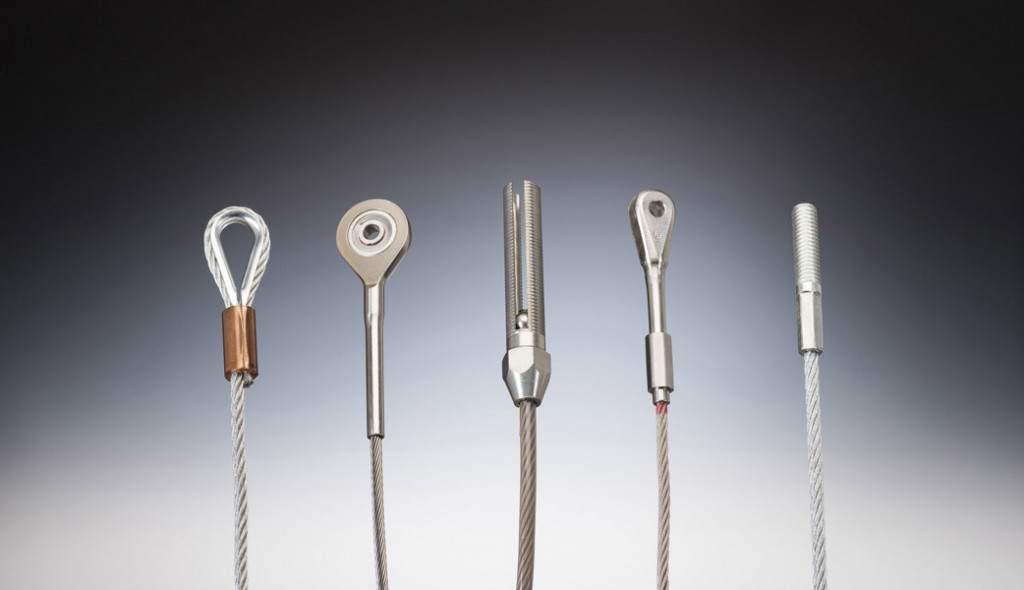
Manufacturer of standard and custom wire rope fittings. Types include clevis, eye end, oval eye, drum socket, coupling, stud and antenna fittings. Products available include open body forged clevis/socket, open body double socket forged, closed body machined clevis/socket and closed body machined double socket/clevis turnbuckles, hooks and eye swivels, insulators and replacement sleeves. Capabilities include turning, milling, drilling, tapping, metal fabrication, welding and assembly. Serves the maritime, airport, amusement park, sports stadium, construction, architectural, utility, rigging, military and other industries. Made in the USA.
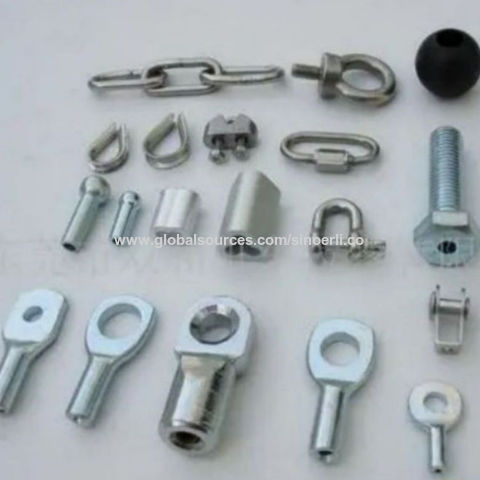
PersonalWe are on hand to personally guide you through the entire process, we translate the jargon, we recommend what’s best, and we are always here in person. No nonsense, just straight talking people who always exceed expectations through our extensive wire rope knowledge and superior service.
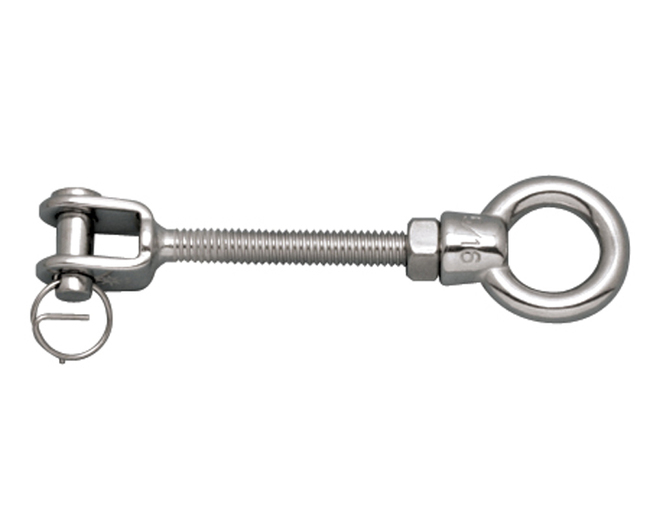
At Carl Stahl Sava Industries, manufacturing a comprehensive family of cable, stainless steel wire rope fittings and tools only explain a portion of what makes us so special as a cable assembly manufacturer. In addition to possessing an ISO 9001:2015 certification, Sava is also FDA and ITAR registered, as well as RoHS and REACH certified. Our wire rope manufacturing process leverages almost 50 years of engineering and manufacturing expertise that customers around the world have grown to depend upon every single day. Additionally, Sava’s sales professionals boast over 100 years of combined technical experience helping organizations just like yours meet the most complex and sophisticated application requirements.
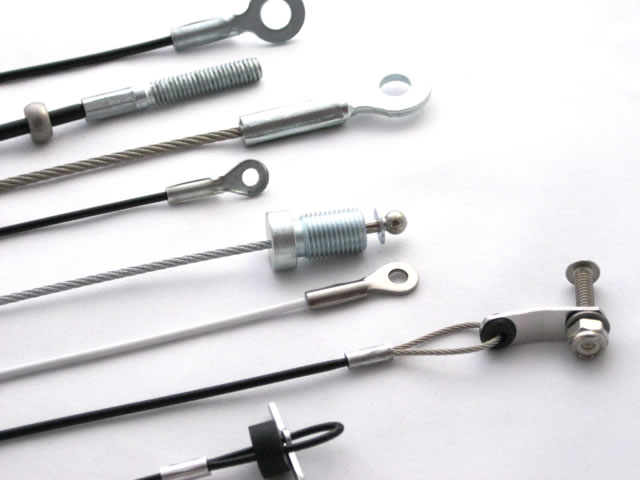
Continental Cable employs 65 people specializing in the manufacture of custom mechanical wire rope cable assemblies. Other product lines include stainless steel and galvanized aircraft cable, a complete line of cable related hardware and tools and plastic coated cable.
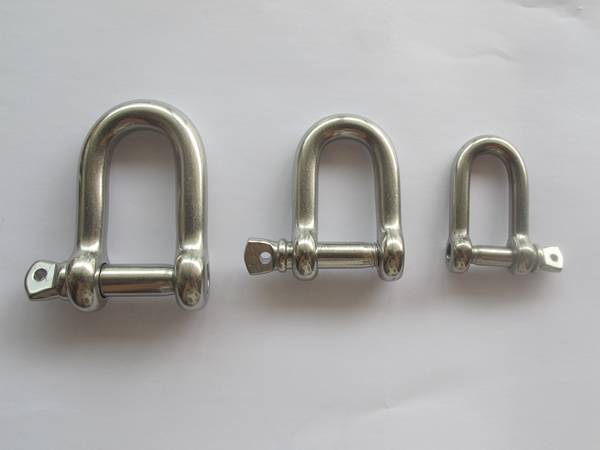
A wire rope is a type of cable that includes several wire strands laced together to form a single wire. Generally, both the terms “wire” and “rope” are used interchangeably with “wire rope”; however, according to the technical definition, to be labeled a wire rope, the cable must have a thickness of at least 9.52 mm. As a versatile, high load capacity alternative to natural fiber ropes such as hemp and manila, wire rope provides motion transmission through nearly all angles, tie down, counterbalance, guidance, control, or lift.
Modern wire rope was invented by Wilhelm Albert, a German mining engineer, between 1831 and 1834. He developed them in order for work in the mines in the Harz Mountains. This rope replaced weaker natural fiber ropes, like hemp rope and manila rope, and weaker metal ropes, like chain rope.
Albert’s rope was constructed of four three-stranded wires. In 1840, a Scot named Robert Stirling Newall improved upon this model. A year later in the United States, American manufacturer John A. Roebling started producing wire rope, aimed at his vision of suspension bridges. From there, other interested Americans, such as Erskine Hazard and Josiah White, used wire rope in railroad and coal mining applications. They also applied their wire rope techniques to provide lift ropes for something called the Ashley Planes project, which allowed for better transportation and increased tourism in the area.
Approximately twenty-five years later, back in Germany in 1874, the engineering firm Adolf Bleichert & Co. was founded. They used wire rope to build bicable aerial tramways for mining the Ruhr Valley. Years later they built tramways for both the Wehrmacht and the German Imperial Army. Their wire rope systems spread all across Europe, and then migrated to the USA, concentrating at Trenton Iron Works in New Jersey.
Over the years, engineers and manufacturers have created materials of all kinds to make wire rope stronger. Such materials include stainless steel, plow steel, bright wire, galvanized steel, wire rope steel, electric wire, and more. Today, wire rope is a staple in most heavy industrial processes. Wherever heavy duty lifting is required, wire rope is there to facilitate.
Wire rope is strong, durable, and versatile. Even the heaviest industrial loads may be lifted with a well-made wire rope because the weight is distributed evenly among constituent strands.
There are three basic elements of which wire ropes are composed: wire filaments, strands, and cores. Manufacturers make wire rope by taking the filaments, twisting or braiding them together into strands, and then helically winding them around a core. Because of this multiple strand configuration, wire rope is also often referred to as stranded wire.
The first component, the filaments, are cold drawn rods of metal materials of varying, but relatively small diameter. The second component, the strands, can individually consist of as few as two or as many as several dozen filaments. The last component, the core, is the central element around which strands are wrapped; wire rope cores maintain a considerable amount of flexibility, while increasing strength by at least 7.5% over the strength of fiber core wire ropes.
The helical winding of the strands around the core is known as the lay. Ropes may be right hand lay, twisting strands clockwise, or they may be left hand lay, twisting strands counter-clockwise. In an ordinary lay, the individual strands are twisted in the opposite direction of the lay of the entire rope of strands to increase tension and to prevent the rope from coming unwound. Though this is most common Lang"s lay has both the strands and the rope twisted in the same direction while alternate lays, as the name suggests alternate between ordinary and Lang style lays. While alternative rope designs are available, the helical core design is often favored, as it allows a wire cable to hold a lot of weight while remaining ductile.
There are many design aspects that wire rope manufacturers consider when they are creating custom wire rope assemblies. These include: strand gauge (varies based on application strength, flexibility, and wear resistance requirements), wire rope fittings (for connecting other cables), lay, splices, and special coatings. Specially treated steel cable and plastic coated cables, for instance, are common to many application specific variations of wire rope such as push pull cable assemblies used in transferring motion between two points.
Suppliers typically identify wire cable by listing both the number of strands and the amount of wires per strand respectively, though stranded cable may alternatively be measured by their lay and length or pitch. For example, a door-retaining lanyard wire rope is identified by its 7 x 7 construction, and wire rope used for guying purposes is identified by its 1 x 19 construction. The most common types are 6 x 19, 6 x 25, 19 x 7, 7 x 7, 7 x 19, 6 x 26, and 6 x 36.
An ungalvanized steel wire rope variety. This uncoated wire rope can also be designed to resist spinning or rotating while holding a load; this is known as rotation resistant bright wire rope.
Also called a coiled wire rope, a coiled cable is a rope made from bundles of small metal wires, which are then twisted into a coil. Wire rope and cable can come in a huge variety of forms, but coiled cables specifically provide the benefits of easy storage and tidiness. Unlike other wire ropes, coiled cables do not require a spool for storage. Because it has been coiled, the cable will automatically retract into its spring-like shape when it is not in use, making it incredibly easy to handle.
A type of high strength rope, made of several individual filaments. These filaments are twisted into strands and helically wrapped around a core. One of the most common types of wire rope cable is steel cable.
Wire rope made not as one solid piece, but as a piece made up of a series of metal links. Wire rope chain is flexible and strong, but it is more prone to mechanical failure than wire rope.
Push pull cables and controls are a particular type of control cable designed for the positive and precise transmission of mechanical motion within a given system. Unlike their counterpart pull-pull cables, these wire rope assemblies offer multidirectional control. Additionally, their flexibility allows for easy routing, making them popular in a number of industrial and commercial applications.
Iron and steel are the two most common materials used in producing wire ropes. A steel wire is normally made from non-alloy carbon steel that offers a very high strength and can support extreme stretchable forces. For even more strength and durability, manufacturers can make stainless steel wire rope or galvanized steel wire rope. The latter two are good for applications like rigging and hoisting.
Technically, spiral ropes are curved or round strands with an assemblage of wires. This gathering of wires has at least one cord situated in the opposite direction of the wire in the outer layer of the rope. The most important trait of this rope is that all the wires included are round. The biggest benefit of this category of rope is that it does not allow the entrance of pollutants, water, or moisture.
Contain an assemblage of strands placed spirally around a core. Stranded rope steel wire patterns have different layers that cross each other to form an even stronger cable or rope. Stranded ropes contain one of three types of core: a fiber core, a wire strand core, or a wire rope core.
Provide an added level of security to a manufacturing production application. Wire rope slings are made from improved plow steel wire ropes that, apart from offering added security, also provide superior return loop slings. Plow steel wire ropes improve the life of a mechanism by shielding the rope at its connection points. The key objective of wire rope slings is to enhance the safety of an application while increasing its capacity and performance. Rope slings are also available in various sling termination options, such as hook type, chokers, and thimbles.
The eye in this rope sling is made using the Flemish Splice method. Just like a typical sling, a Permaloc rope sling improves safety and provides reverse strength meaning that the uprightness of the eye does not depend on the sleeves of the metal or alloy. Additionally, permaloc rope slings offer an abrasion resistance feature that makes them long lasting.
These slings have all the features that most other slings offer. However, compared to their counterparts, Permaloc bridle slings provide better load control, wire rope resistant crushing, robust hooks and links that work for a longer duration, and help save on maintenance requirements.
Manufacturers produce wire rope for many different reasons; from cranes to playground swings, wire ropes have something for everyone. Among the many applications of wire rope are hoisting, hauling, tie down, cargo control, baling, rigging, anchoring, mooring, and towing. They can also serve as fencing, guardrails, and cable railing, among other products.
Some of the industries that make use of wire rope include industrial manufacturing, construction, marine, gas and oil, mining, healthcare, consumer goods, and transportation. Others include the fitness industry, which uses plastic coated cable products in weight machines, the theater industry, which uses black powder coated cables for stage rigging, the recreation industry, which uses plastic coated cables for outdoor playground equipment, and the electronics industry, which uses miniature wire rope for many types of electronic equipment and communications devices.
Wire ropes are typically made from cold drawn steel wire, stainless steel wire, or galvanized wire. They may also be made from a wide variety of less popular metals, including aluminum, nickel alloy, bronze, copper, and titanium. However, nearly all wire ropes, including control cables, are made from strands of cold drawn carbon steel wires. Stainless steel rope and cables are subbed in for highly corrosive environments. Galvanized cables and galvanized wire rope are popular for their increased strength and durability; these qualities are important to specialized ropes like galvanized aircraft cable.
A core may be composed of metal, fiber or impregnated fiber materials depending on the intended application. Cores may also be another strand of wire called an independent wire rope core (IWRC).
Wire rope, depending on its application, is subject to many standard requirements. Among the most common of these are the standards detailed by OSHA, ASTM International, and ISO. Per your application and industry, you’ll likely have others you need to consider. To get a full list, talk to your service provider.
To determine the safety factor, which is a margin of security against risks, the first step involves knowing the type of load that the rope will be subjected to. The load must consider the shock loads and blowing wind effects. The safety factor is characterized in ratios; typical are 4:1 and 5:1. If a ratio is 5:1, then the tensile strength of a wire rope must be five times of the load it will be subjected to. In some applications, the ratios can go up to 10:1.
By weighing all these factors carefully, the wire rope that you will buy will be safe to use and last considerably. For the best advice and guidance, though, don’t go it alone! Find a great wire rope supplier that you can trust. You’ll know you’ve found the right supplier for you when you talk to one that can not only fulfill your requirements, but shows that they are excited to go the extra mile for you. For a company like this, browse the list near the top of the page.
As the cables play an integral role in the safety of many operations and structures, careful analysis of a wire rope and all of its capabilities and features is vital. Important qualities and physical specifications you must consider include wire rope diameter, breaking strength, resistance to corrosion, difficulty of flattening or crushing, bendability, and average lifespan.
Each of the aforementioned considerations should be compatible with the specific application for which the rope is intended as well as the environment in which such operations are undertaken. Temperature and corrosive environments often require specially coated wire ropes with increased durability.
When you use your industrial wire rope, the first thing to remember is to not exceed your rope’s rated load and breaking strength. If you do not stay within these parameters, you risk causing your rope to weaken or even break.
Rust, kinks, fraying and even carefully performed splicing will all have an impact on the performance of wire ropes. To maintain the integrity of your wire rope assembly, you need to inspect them regularly and clean and lubricate them as needed. In addition, you need to store them out of the wet and cold as much as possible. Also wrap them up properly, so they are not kinked.
Steel that is designed for applications, which require greater safety features with no increase in diameter size and the highest resistance to abrasive wear. This steel is fifteen percent stronger than Improved Plow Steel, and the tensile strength of this grade ranges from 280,000 to 340,000 psi.
A high-carbon steel having a tensile strength of approximately 260,000 psi that is roughly fifteen percent stronger than Plow Steel. Most commercial wires are made from IPS.
A low carbon steel wire of approximately 10,000 psi, which is pliable and capable of repeated stresses from bending around small sheaves. This grade is effective for tillers, guys and sash ropes.
The manner in which the wires are helically wound to form rope. Lay refers specifically to the direction of the helical path of the strands in a wire rope; for example, if the helix of the strands are like the threads of a right-hand screw, the lay is known as a right lay, or right-hand, but if the strands go to the left, it is a left lay, or left-hand.
A classification of wire rope according to its breaking strength. The rank of grades according to increasing breaking strengths is as follows: Iron, Traction, Mild Plow Steel, Plow Steel, Improved Steel, Extra Improved Steel.
The act of fastening a termination to a wire rope through physical deformation of the termination about the rope via a hydraulic press or hammering. The strength is one hundred percent of the wire rope rating.
A grade of rope material that has a tensile strength range of 180,000 to 190,000 psi. Traction steel has great resistance to bending fatigue with a minimum of abrasive force on sheaves and drums, which contributes to its long use in elevators, from which the steel gets its name.
It is composed of wire strands that are braided together. Wire braid is similar to stranded wire. The difference between the two is the fact that stranded wire features strands that are bundled together, rather than braided.
Essential parts of cable assemblies, wire rope assemblies and wire rope slings that assist spliced or swaged rope ends in connecting to other cables and keeping cables and rope from unraveling.
A wire rope cable assembly is a metallic rope consisting of bundles of twisted, spiraled, or bonded wires. While the terms wire rope and cable are often used interchangeably, cables are typically designated as smaller diameter wire ropes, specifically wire ropes with a diameter less than 3/8 inch. Therefore, wire rope cable assemblies are typically utilized for lighter duty applications.
Or cable assemblies, are cables which are composed of many spiraled bundles of wire. These cables are used to support hanging objects, connect objects, pull or lift objects, secure items, and much more.
Wire rope wholesalers can sell an extensive range of wire rope and wire rope accessories at a very affordable rate as well as in bulk. Many of the additional wire rope equipment that wire rope wholesalers provide include: swivel eye pulleys, eye nuts, eye bolts, slip hooks, spring hooks, heavy duty clips, clevis hooks, turnbuckle hooks, anchor shackle pins, s hooks, rigging blocks, and much more. Wire rope fittings will generally improve the versatility of the wire and also prevent fraying.
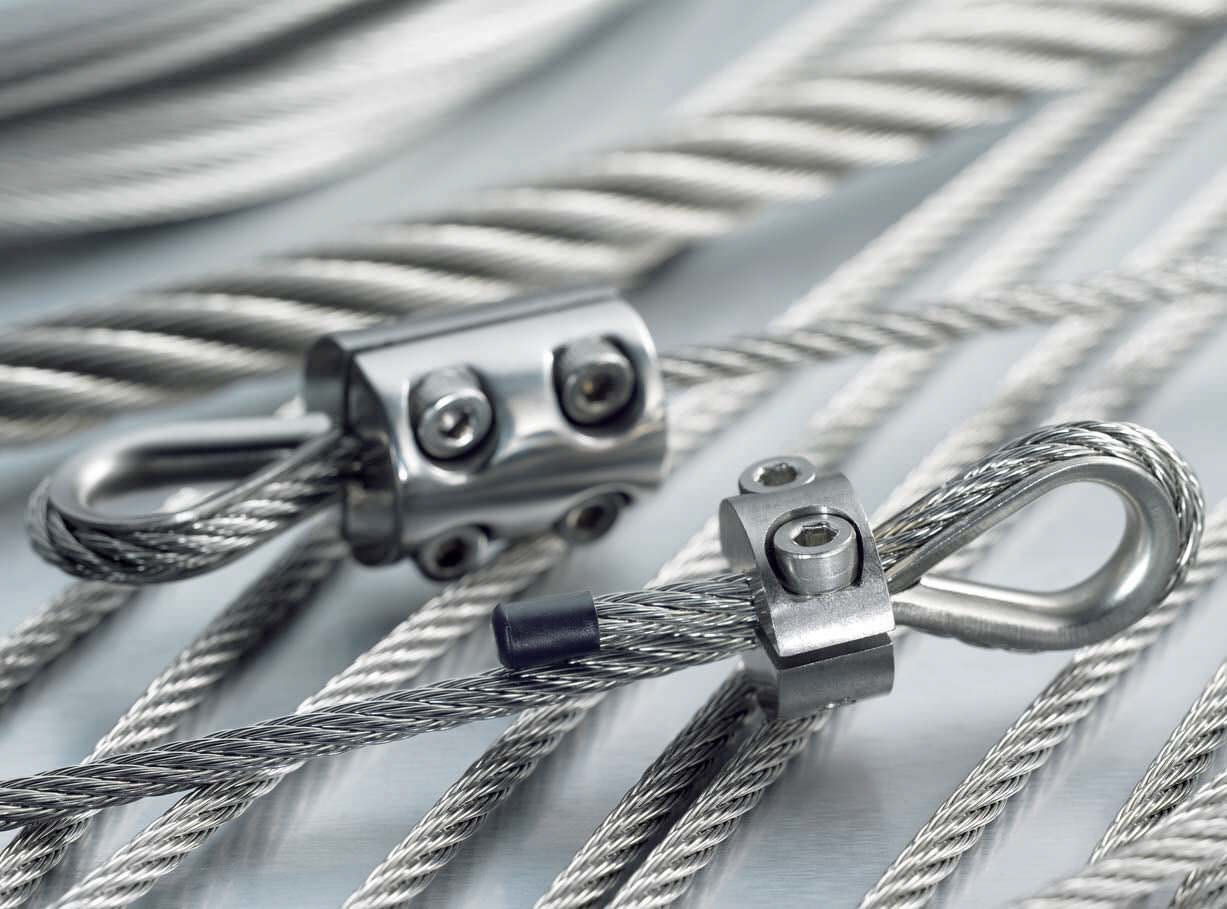
The majority of wire rope fittings are elements of a complete wire rope assembly designed for a specific task such as motion control or mechanical automation. Wire rope fittings are heavily implicated in a number of industrial processes and equipment such as mining equipment, braking, aircraft cables, levelers, hood latch releases and more. The versatility of fittings renders them essential to industries such as automotive, agriculture, construction, marine, aerospace, transportation and virtually all applications where wire rope is used. Specific examples include clamps, clips, sleeves, links, hooks, forks, eyes, studs and pins. When used for heavy duty lifting, pulling or other activities, fittings are often permanently attached or affixed to a given cable for added durability and security though change tool kits are sometimes available allowing for interchangeable fixtures. Wire rope manufacturers often provide a range wire fitting options as well in order to accommodate the many different uses for the cables.

While some use these two terms interchangeably, technically wire rope refers to a diameter greater than 3/8”. Cable rope - also called aircraft cable - applies to all smaller variations.
Consequently, aircraft cable is only used for lighter-duty purposes, such as winch lines, fences, and railings, while wire rope can be using for lifting, towing, hoisting, etc. Both are ideal for outdoor environments because the strength and length remain constant regardless of whether they are wet or dry.
If you are looking for an option specifically designed for lifting, check out our wire rope slings. They come in a number of configurations - choices include leg count, end hardware, and more.
Generally composed of wires, strands, and a core shaped in a spiral pattern, wire rope is incredibly durable. Steel wires are aligned in a precise helix geometric pattern to form a strand in a process known as "stranding." A "closing" comes next, where the strands are laid around the core to form a wire rope.
The greater the diameter, the greater the break strength. Our selection of 1/8" stainless steel cable has a break strength of less than 2,000 lbs., while our 2-1/2" wire rope has a break strength of more than 600,000 lbs.!
Right hand and left hand designations indicate which way the strands wrap around the core of the steel rope, while regular lay and Lang lay designations specify which way the wires that make up the strand are formed in the helix pattern.
Regular lay means the wires are rotated opposite the direction of the strands around the core. Lang lay means the wires are twisted in the same direction as the strands wrapped around the wire rope core.
Our wire rope lay is right hand regular lay, with strands wrapped around the core to the right, and the wires making up the strand turned and rotated to the left.
Independent wire rope cores (IWRC) are made from steel, offer more support to the outer strands, and have a higher resistance to crushing. IWRC also offer more resistance to heat and increase the strength of the rope.
This refers to how many strands make up the rope and how many wires make up one strand. For instance, a 6x26 wire rope has 6 strands around a core with 26 wires making up each strand.
All wires consist of layer(s) arranged in a specific pattern around a center. Pattern designation is affected by the size of the wires, the number of layers, and the wires per layer. Wires can utilize either a single pattern style or a combination of them, known as a combined pattern:
Warrington - Two layers of wires. The outer layer has two diameters of wire (alternating between large and small), while the inner layer has one diameter.
Although wire rope is extremely strong, it can become damaged with improper use, making it unsafe to use. It"s important to have regular inspections for breaks, corrosion, overuse wear, and kinks.
Our rigging supplies category includes hardware and accessories for cranes, dredging, excavating, hoists & winches, logging, and marine uses. If you"re unsure what you need or have questions, call for help from our product specialists with expertise in wire rope/cable rigging supplies.
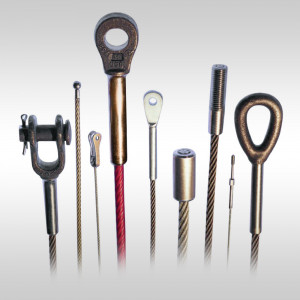
Industrial Wire Rope Fittings, SS Wire Rope Fittings, Wire Rope Cable End Fittings, Galvanised Wire Rope Fittings, Wire Rope Clips Provider & Exporter
Multinox Inc is the leading Manufacturer and Supplier of. You can use our Industrial Wire Rope Fittings for safely rigging your equipment to a support. The Wire rope fittings processed by us is used extensively in the marine, architectural, yacht ringing and other structural applications. The Stainless Steel Wire Rope manufactured by us is our prime best-sellers throughout the global market. The superior grade raw materials used in the manufacturing process by us result in the exceptional holding strength and lifting strength of wire and cable ropes. OurSS Wire Rope Fittingsare portable and lightweight for optimal usage by our customers worldwide.
We manufacture varieties of Wire Rope fittings that are pull-tested and proof-tested. There are numerous options available in the size, shape and further customizations of the products belonging to our catalog of Wire Rope Fittings. The Wire Rope Cable End Fittings provides nominal breakage strength and is best-suited for the aircraft cable fittings. However, ourGalvanised Wire Rope Fittingscan be crimped into many different shapes, like round, hex, square etc.
These Wire Rope Clips help in securing wire rope ends on turning back from a loop. They have a wide range of applications in the architectural and marine applications. We manufacture Wire Rope Fittings with extra threading and ultimately finished based on the requirements of our customers. The highly economical pricing of our products and affordability draws our customers towards us daily. TheSingle Wire Rope Fittingmanufactured by us is rightfully exercised in lifting lightweight air packed goods or equipment.

Shandong Xingying Environmental Energy Technology Co. LTD is a professional company specializing in the production of wire ropes. The company is located in Hebei Anping which is close to a big northern Chinese port - Tianjin Port. So it enjoys the strategic location and convenient transportation.
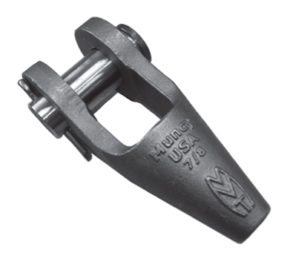
For over 40 years, we have served nearly every industry with top-quality wire rope and cable solutions. Whether you"ve been working with wire rope for years, require a highly specialized solution, or are still searching for what you need, we can help.
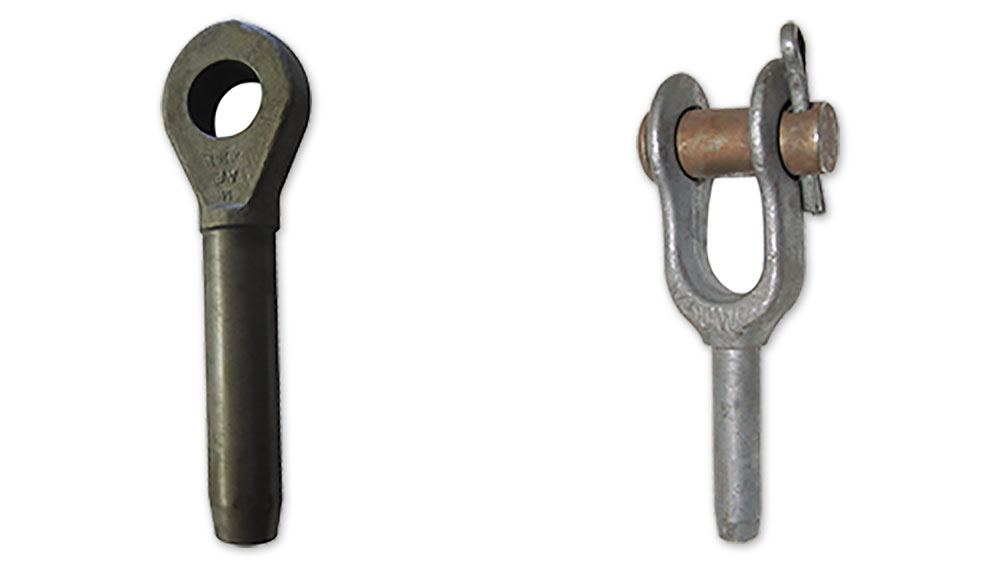
Stock up on every variety of steel wire rods at the Alibaba metalworking store. Our listings feature wholesale steel rods from a network of dependable Chinese manufacturing partners. If you need to source steel rods for construction projects, you"ll find products that are robust and durable. And if you need welding rods, they are easy to find via our search engine. Track down the stainless steel wire rope fittings you need at affordable prices at Alibaba.com.
What can you do with the steel wire rods available from Alibaba"s wholesale store? One common use for steel rods is in the welding sector. Steel works well as a welding rod material thanks to its high ductility, meaning that welds are relatively strong and long-lasting. Choose a low carbon rod and you"ll be all set for successful welds in industrial settings and workshops alike. However, steel wire also has applications beyond welding. You can use it as wiring in electronic circuits and power distribution systems and it works especially well in high temperature settings as armored cabling. Find the ideal stainless steel wire rope fittings for every industrial use at Alibaba.com.
Steel wire rods also have applications in everyday life. For example, you can use coils of steel wire to construct fences and barriers both inside and outside homes. It"s a common material in agricultural businesses thanks to its toughness and resistance to oxidation. Use it to create reinforcement cages, enclosures for equipment, or add it to concrete to add extra strength where it really matters. From welding to concrete reinforcement, stainless steel wire rope fittings will always find a use. And whether you need small batches or huge bulk orders, our metallic materials catalog is the ideal place to look.
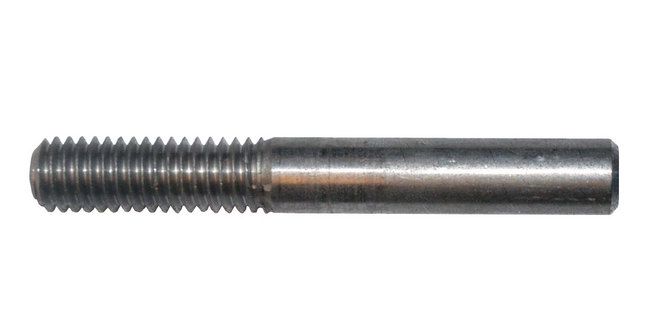
Founded in the 1800s, Industrial Wire Rope Supply Company is a family-owned business with corporate office in Cincinnati and a branch office in St.Charles, Missouri. We provide Wire Rope, Wire Rope Fittings, Fiber Rope, Chain, Nylon Slings, and Wire Rope Slings worldwide.
Wire Rope Fittings – Wire Rope Clips, Chain Shackles, Anchor Shackles, High-strength Alloy Shackles, Equalizing Thimbles, Gold Nose Sockets, and Turnbuckles

Whether you are using boom pendants, raising lines, cranes or other devices for your construction project, having strong wire ropes is essential to executing your job safely and efficiently. That’s why we offer dependable, top-of-the-line wire ropes for your specific needs. We’ll work with you to identify the best thickness and type of rope for your project so you can complete it correctly and on schedule.
Weoffer a variety of wire ropes and wire ropeassemblies for your particular needs. Our wire ropes are available in both spelter socket and swaged socket assemblies. Our types of rope include general purpose wire rope, rotation resistant wire rope, galvanized wire rope and stainless steel wire rope. Whatever your application, we have the type, size and strength of rope you need.

Established in the year 2018 at Mumbai, Maharashtra, we “Neev Steel are a Sole Proprietorship based firm, engaged as the foremost Wholesale Supplier of Aluminum Sheet, Stainless Steel Pipe, etc. Our products are high in demand due to their premium quality and affordable prices

Wire Rope Australia is a wholesale distributor of wire rope and wire rope supplies. We supply top quality galvanized wire rope, stainless steel wire rope, coated wire rope and a full range of wire rope fittings, tools and accessories. We serve the wholesale market with quality products and excellent customer service at very competitive prices.

Each use for a custom wire rope cable assembly has its own unique purpose. We can assist you in designing a custom cable assembly to fit your specific needs.
Tyler Madison, Inc. specializes in cable size from 3/64" - 3/8" in diameter and 270 lbs. - 14,400 lbs. in breaking strength. We will put our years of experience to work in helping you design and produce exactly what you need. We have manufactured quality custom wire rope cable assemblies for leading companies in the following industries:Aerospace
Tyler Madison is an industry leading manufacturer of wire rope cable assemblies and custom wire and cable. Our knowledge and experience give us the capability to manufacture standard and custom wire rope assemblies and products for a variety of industrial clients. With in-house engineering and design services, you can get the exact kinds of wire rope assemblies and steel wire cable products that you are looking for from one place at an affordable price. Call us today to find out what types of cable assemblies we can do for you!

We advise you on the selection of the suitable wire rope or the right strand for your application. Thanks to the wide range of options, we can offer steel wire ropes for a wide variety of applications. All TechnoCables are manufactured from wires of high tensile strength. Years of experience and a continuous quality assurance chain from incoming goods to dispatch are a guarantee for the highest level of reliability and quality. This makes us your reliable partner for all rope applications.
We offer ropes in the range under 1 mm to 8 mm. Fine ropes with a small diameter are used in medical technology for example. Wire ropes with a larger diameter in mechanical engineering or in the field of sun protection.strands 0.09 mm - 5.0 mm
The selection of the suitable material depends on the area of application. Steel wire ropes are in many cases the most economical option. For many areas of application, ropes made of galvanized steel have adequate corrosion protection. We recommend the use of stainless steel cables for applications with a high corrosion potential.Galvanized steel ropes and strands
Strands are made by stranding wires and are the basic for further rope manufacturing. 3 to 37-wire strands are stranded here. As the number of wires increases, the flexibility of the rope and thus the fatigue strength increases. A strand, rope or fiber insert can be used as the insert.Steel wire ropes
Surface treatments can be individually tailored to the respective demands and customer application. Functional coatings can also be implemented on request.Galvanized steel cable coated, stainless steel cable coated




 8613371530291
8613371530291